Feeling uncomfortable when wearing glasses with headphones? Check out this guide and bid your discomfort goodbye!
Headphones have come a long way, not just in technology but also when it comes to comfort. Fabric headphones, open-ear headphones, TWS, and more have replaced the 10-pound headphones of the 1880s.
Despite these innovations, there is one aspect that most manufacturers have overlooked: comfort for those who wear glasses. Wearing headphones can be painful for people who wear glasses due to the pressure on the temple and ear areas. For some, even wearing cushioned earcups won’t provide much relief.
The good news is, you can alleviate this torture with simple headphones adjustments or thinner-framed glasses. Read on as we cover all this and more below!
In This Article
How to Wear Glasses With Headphones Without Feeling Discomfort
Headphones can be uncomfortable to wear with glasses because they press your spectacles’ frame against your scalp.
Thus, the best way to reduce this discomfort is to lessen the pressure from your eyeglasses and headphones. Here are a few methods you can try:
- Get glasses with thinner frames
- Stretch your headphones out to reduce the clamping force
- Choose over-ear headphones
- Choose thicker ear paddings
- Cut a gap through the ear cushion
- Purchase virtual reality (VR) frame glasses
- Try wearing Pince-nez glasses
Get glasses with thinner frames
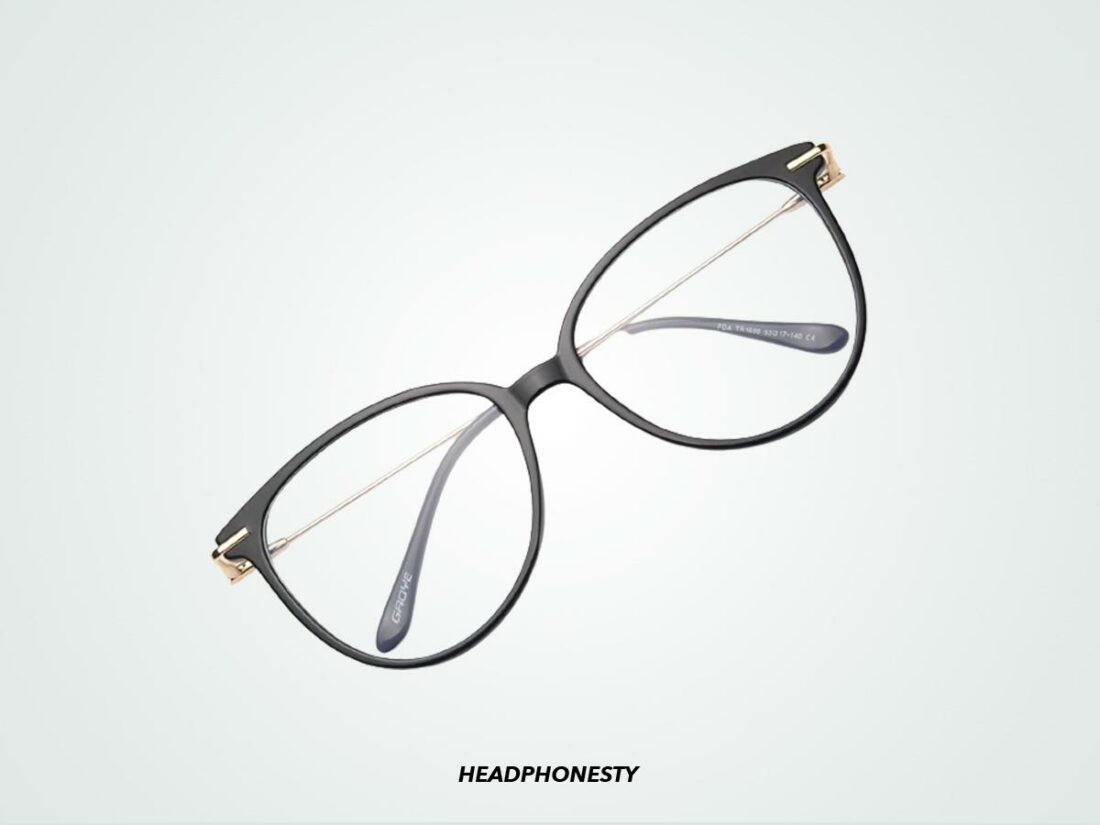
Wearing headphones would generally be more comfortable with thinner-framed glasses than thicker ones.
The surface area of thinner frames pressing against the scalp would be smaller than that of thicker ones, alleviating pressure on the ear cartilage and temporal bone.
If you are a heavy headphones user, the general rule of thumb when purchasing glasses is: the thinner, the better.
This solution is best for those willing to buy new glasses. So, if you plan to purchase a pair soon, consider this.
Stretch your headphones out to reduce the clamping force
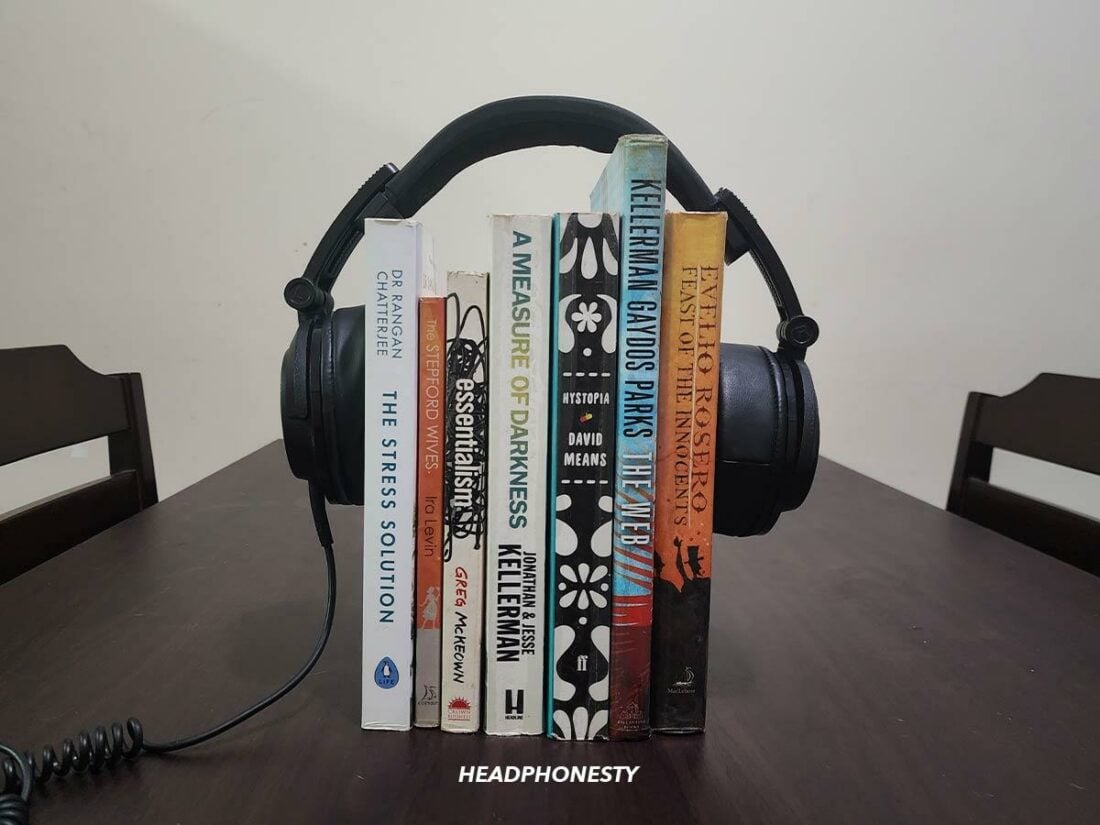
Clamping force refers to the pressure headphones exert to stay in place while you wear them. A strong clamping force intensifies the pressure your glasses exert on the sides of your head, leading to discomfort.
To make headphones more comfortable for daily use, consider stretching them out to loosen the clamping force. The easiest way to do this is by clamping your headphones over a stack of books about 1 inch wider than your head.
Test if the headphones fit comfortably after every few hours. For instance, you can check every 2 hours for 24-48 hours. If there is not much difference after 48 hours, try using a slightly wider stack of books.
Choose over-ear headphones
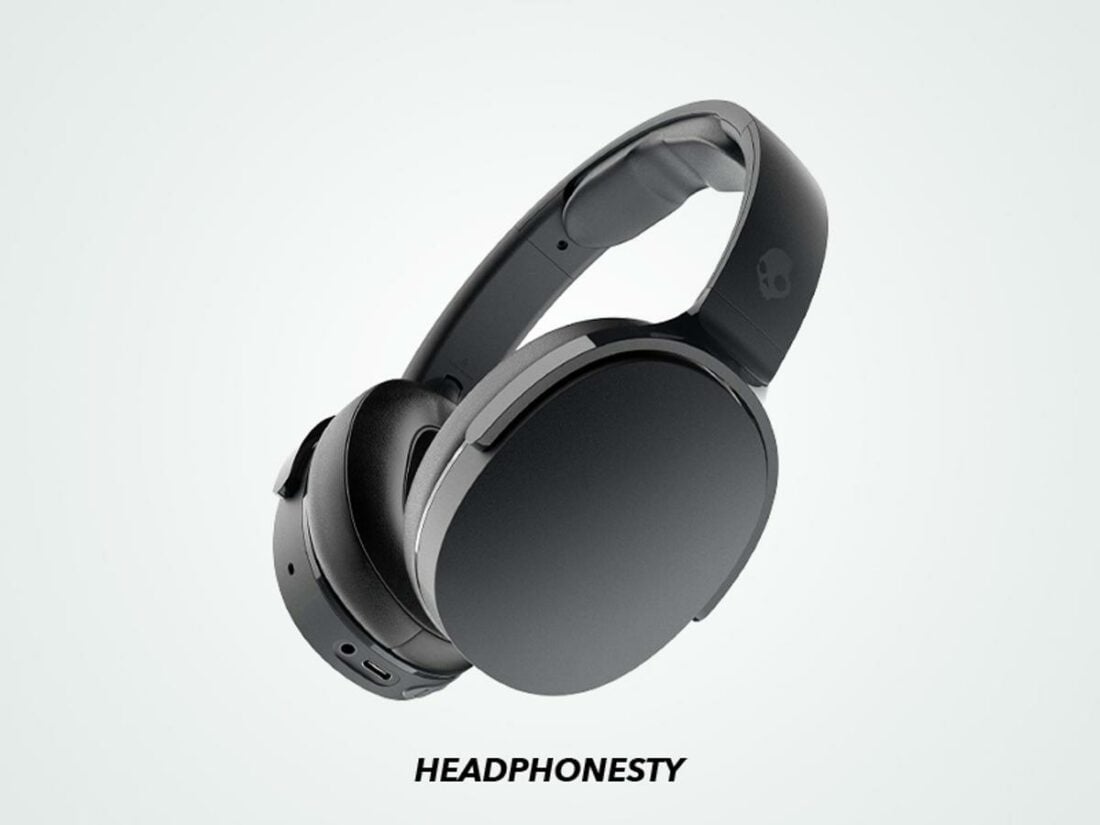
Most forums and blogs report that over-ear headphones are more comfortable than on-ear ones, especially for bespectacled users.
This is because the ear paddings of the over-ear headphones encompass the circumference of the ears instead of pressing against them. As a result, the pressure they exert on the temporal bone and ear cartilage is less.
Choose thicker ear paddings
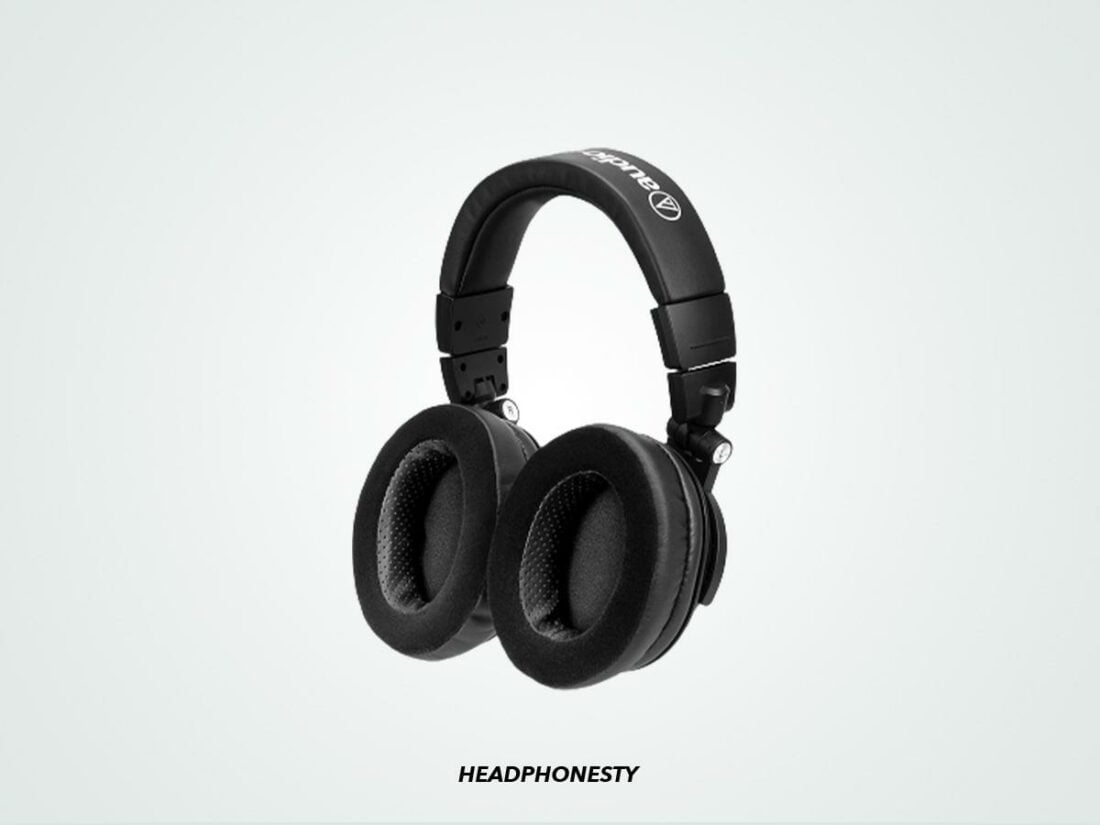
When it comes to ear paddings, always follow this rule – the thicker, the better.
Ear paddings buffer the pressure from your headphones. Having thicker cushions, therefore, can minimize the discomfort you may feel when your headphones press on your glasses.
There are variations of ear cushions for users with different needs. We prefer foam ear cushions, as they can remember the shape of your ear, thus ensuring a good fit every time you wear them.
Cut a gap through the ear cushion
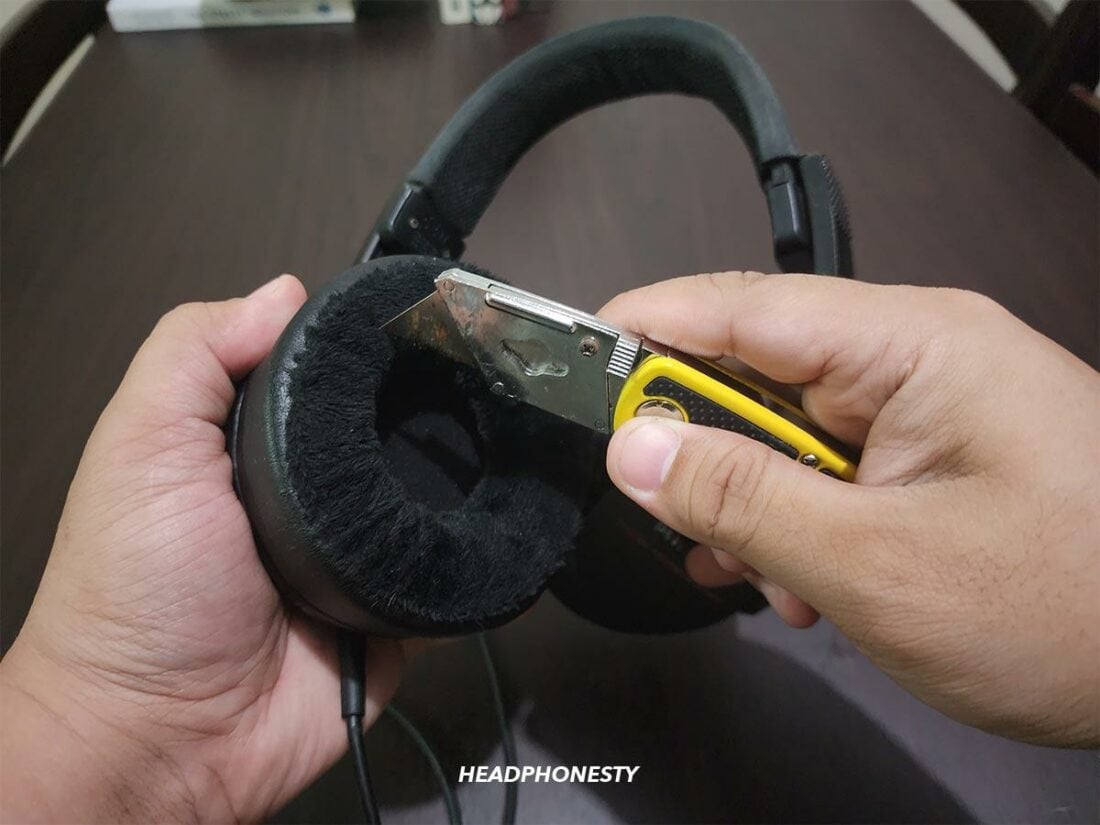
If you currently have over-ear headphones, consider following what Whitson Gordon, author of Popular Science, did– making the headphones accommodate you instead of you to them.
He cut a hole through his ear paddings where the frame of his glasses sits. It is a brute force method to reduce the pressure exerted on the frame.
Purchase virtual reality (VR) frame glasses
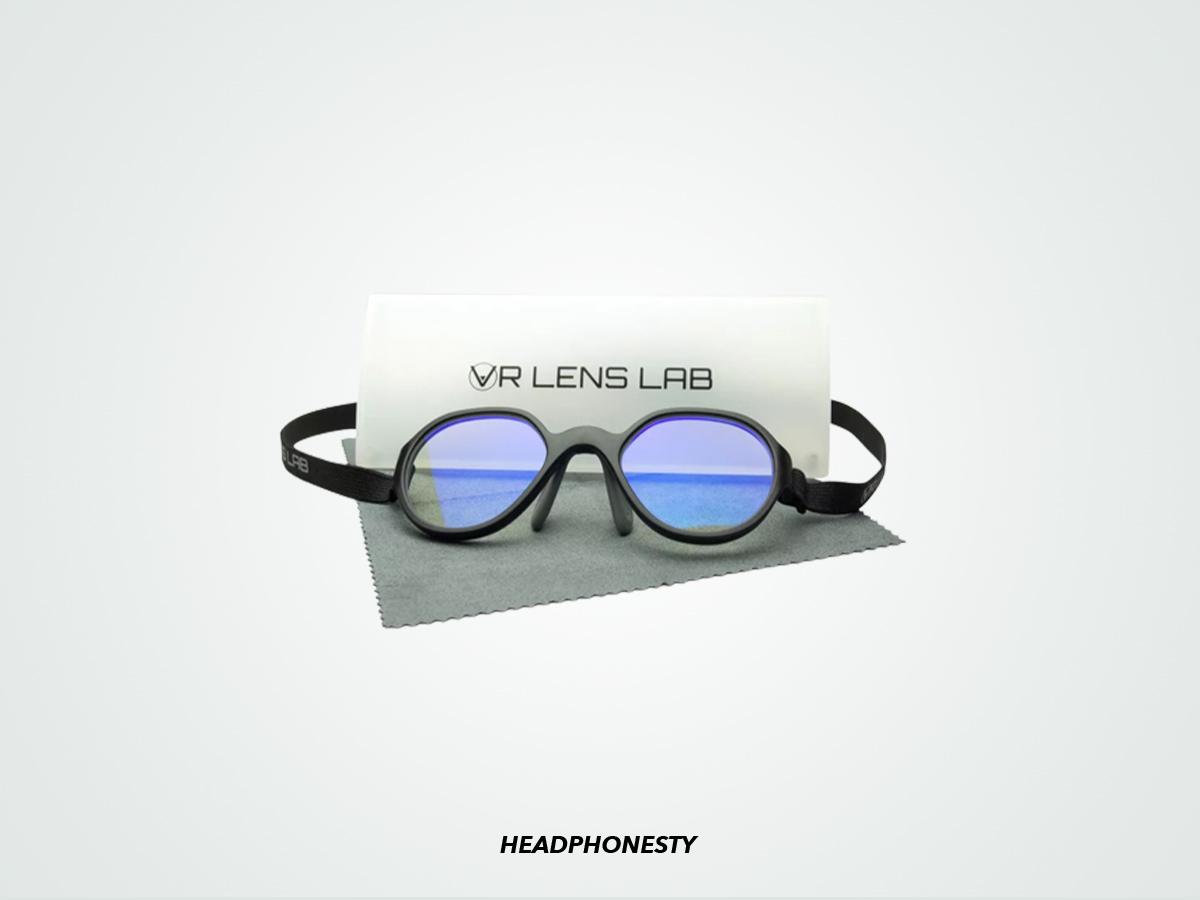
You can also opt for VR Frames if you want a unique solution to this problem.
These glasses are primarily designed for virtual reality (VR) headsets—display devices allowing users to see and interact with computer-generated images. However, you can also use VR frames with your prescription lenses.
VR frame glasses are lightweight and come with a wearable strap, mimicking goggles in appearance. This strap is flat and soft, which means it exerts little pressure on your ears and the sides of your head. Even with headphones, you will barely feel the strap digging into your scalp, easing your discomfort.
So, if aesthetics aren’t an issue for you, VR frame glasses are a viable solution for wearing headphones for a more comfortable experience.
Try wearing Pince-nez glasses
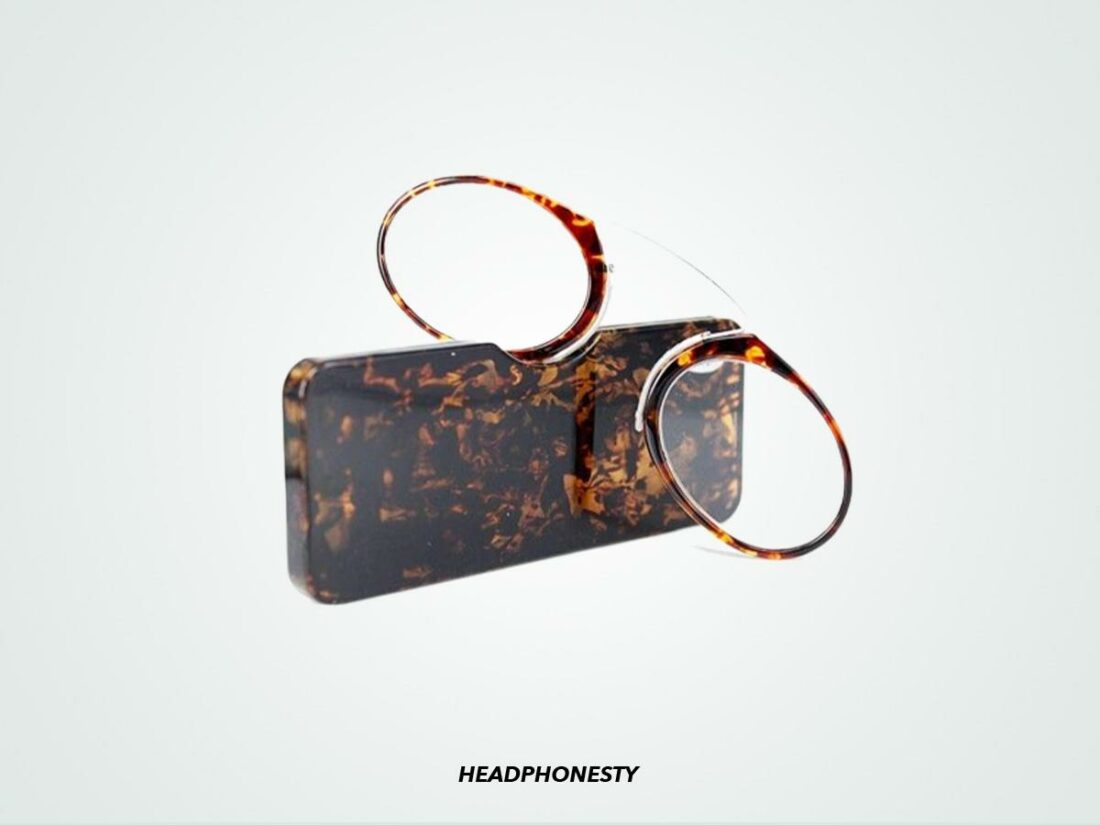
The Pince-nez is an iconic pair of glasses that stay on without using stems. It rests on the bridge of your nose, making it convenient to wear with headphones. Like the VR Frames, the Pince-nez offers an interesting alternative to conventional glasses if you wear headphones.
Why Is Wearing Glasses With Headphones Uncomfortable?
The discomfort you feel from wearing glasses with headphones originates from two painful conditions that their joint pressure can trigger. These are:
- Compression headaches caused by pressure at the temporal bone; and
- Auricular chondritis resulting from pressure from prolonged wearing of both items
Headaches
Tight headphones can put repeated pressure on the skull’s temporal bone and the trigeminal nerve underneath. This digging sensation can result in compression headaches, the risk for which is compounded by the added pressure from your glasses’ frame.
You can avoid compression headaches by minimizing the force exerted on your head. But, once they start, you can only resolve them by removing the pressure source, which can take time to work.
Sore ear cartilage or auricular chondritis
Constant mechanical pressure from your glasses and headphones can result in ear trauma, resulting in referred ear pain. What’s more, prolonged and repeated injury to the same area can cause soreness, irritation, and swelling.
This phenomenon is called auricular chondritis– an inflammation of the ear cartilage which presents as swelling, redness, or pain in the outer ear. To prevent this condition, consider reducing potential sources of trauma to your ears, including the joint pressure from headphones and glasses.
What Causes Discomfort When Wearing Glasses With Headphones?
Now, you might be asking – what do these conditions have to do with wearing glasses? Why is it uncomfortable to wear glasses with headphones?
You feel uncomfortable because of the constant pressure these two accessories exert on your head together.
Sometimes, this mechanical pressure can translate to more serious problems like compression headaches and auricular chondritis. But, most times, they can simply be an annoyance or a slight pain near your ears.
However, wearing your headphones and glasses together isn’t an automatic recipe for disaster. The quality and ergonomics of your headphones play a considerable role in your overall comfort with your glasses on.
Here are a few factors that can affect your comfort:
- Clamping force of the headphones
- Material and thickness of ear padding
- Types of headphones
- Design of glasses
Clamping force of the headphones
If the clamping force is too weak, the headphones would have a higher risk of falling off from the head with any sudden change in movement, such as a turn of the head.
However, if the clamping force of the headphones is too strong, it puts more pressure on the ear cartilage and temporal bones, leading to headaches and/or ear soreness.
The pressure you experience on the ears’ cartilage and temporal bones is further intensified by the burrowing of the glasses frames on the scalp of the head.
Material and thickness of ear padding
The ear padding alleviates the tightness you might feel while wearing headphones. So, it’s essential to pay attention to both the material used for the cushion itself and the thickness of the ear padding. Having softer, thicker padding can buffer the clamping force of the headphones, thus reducing discomfort.
The most common type of materials used for headphones ear cushions are:
Leather and pleather ear cushions are harder in terms of cushioning as compared to foam and velour.
However, the material used and the ear cushion’s thickness often come at a trade-off between comfortability and sound quality.
Harder materials like leather and pleather emphasize bass for better sound quality. However, they are usually thinner and less comfortable to wear. Memory foam, meanwhile, is thicker, breathable, and more comfortable to use. The trade-off, however, is a poorer sound quality lacking in bass.
Types of headphones
Two types of headphones have comfort issues while wearing glasses. They both use a band over the head to hold the ear cups in position:
On-ear headphones
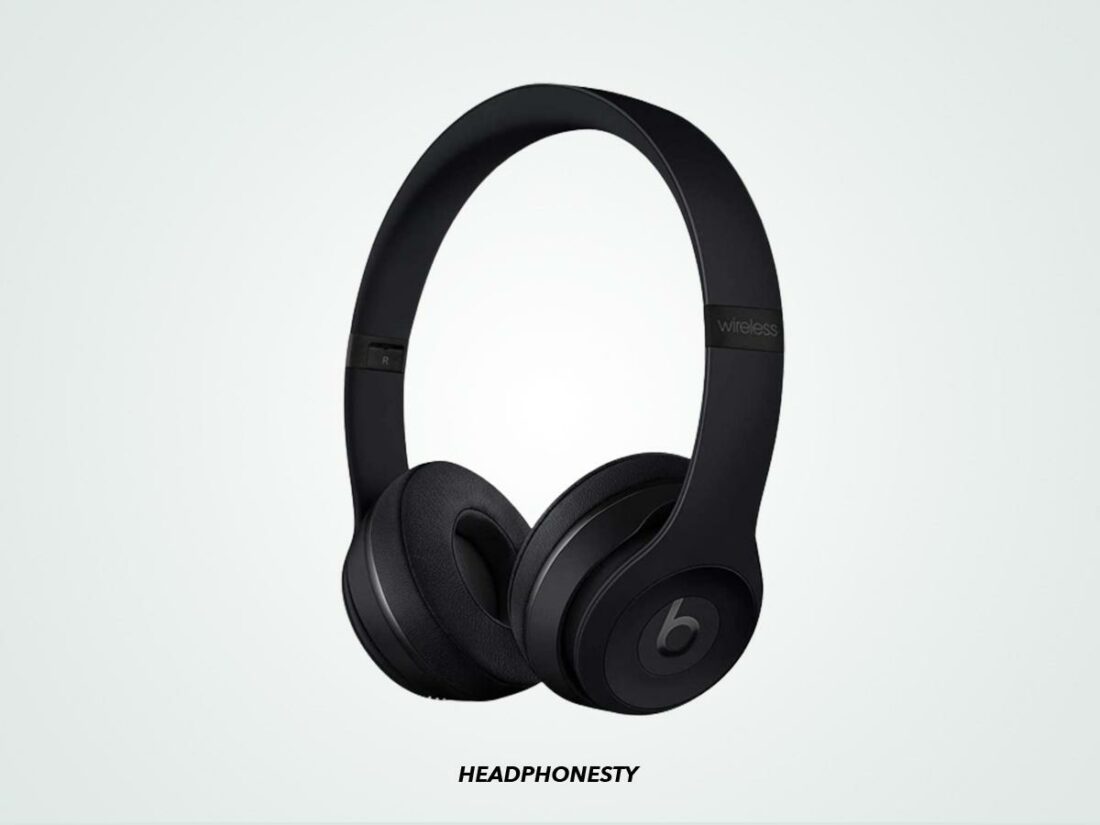
On-ear headphones have smaller ear cups that rest over the ears. This means they tend to press on the ears, which causes pain when worn longer. They are also more likely to injure the temporal bone and outer ear cartilage, where they can exert intense pressure, when worn with glasses.
Over-ear headphones
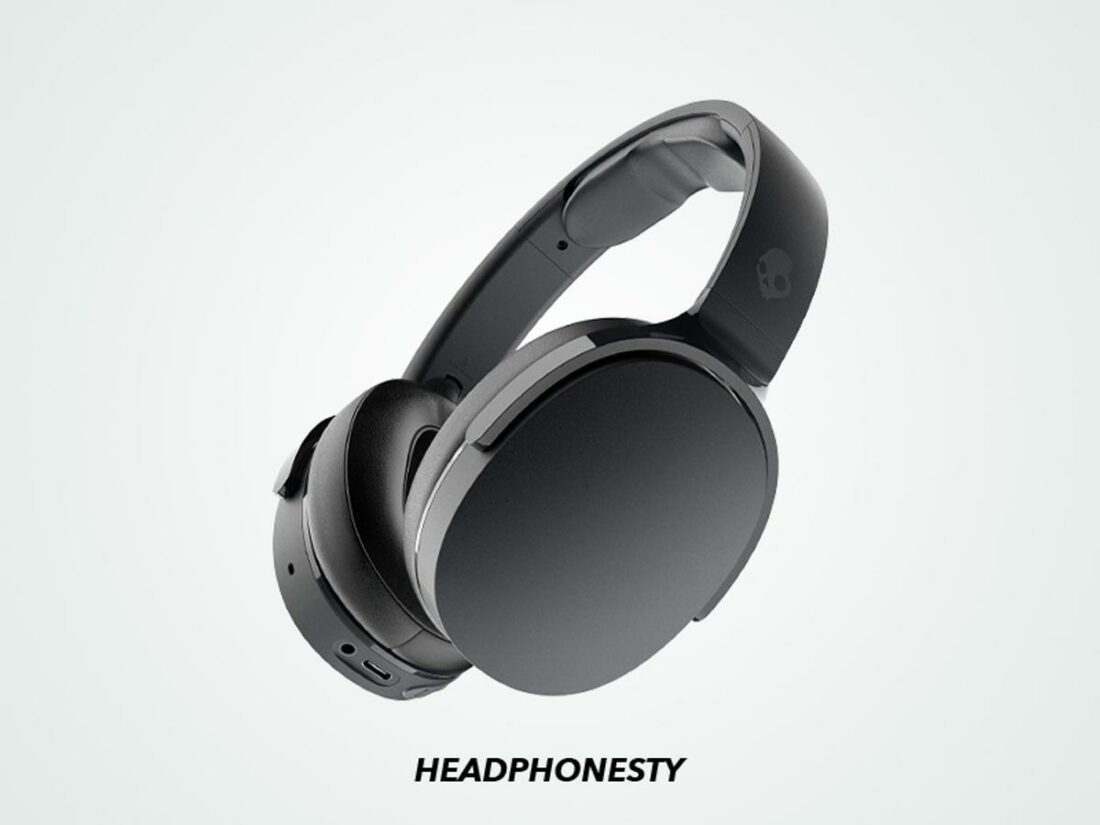
Over-ear headphones have larger ear cups that cover the whole ears. They usually are bulkier and heavier than on-ear headphones, resulting in a greater clamping force. This increases the pressure around the ear area, especially near the glasses, making them uncomfortable. The greater clamping force can also lead to compression headaches with prolonged use.
Nonetheless, over-ear headphones are the preferable choice for headphone users with glasses. Thicker cushions can easily buffer their strong clamping force, or you can quickly loosen them by stretching them out.
Design of glasses
Spectacles with thinner frames have less surface area pressing on your head, so the pressure they exert is negligible.
In contrast, thicker frames can push harder against your ear cartilage and temporal bone. These are drastically more uncomfortable compared to glasses with thinner frames.
Conclusion
Although headphones and eyeglasses seem like a bad combination, there are many ways to make wearing both more comfortable. It all boils down to limiting the pressure they exert on your ears.
We hope this article has given you options to mitigate discomfort when wearing glasses with headphones. Now, you can listen to music or podcasts without removing either!
Did we miss a great technique to make wearing glasses with headphones more comfortable? Let us know in the comments!
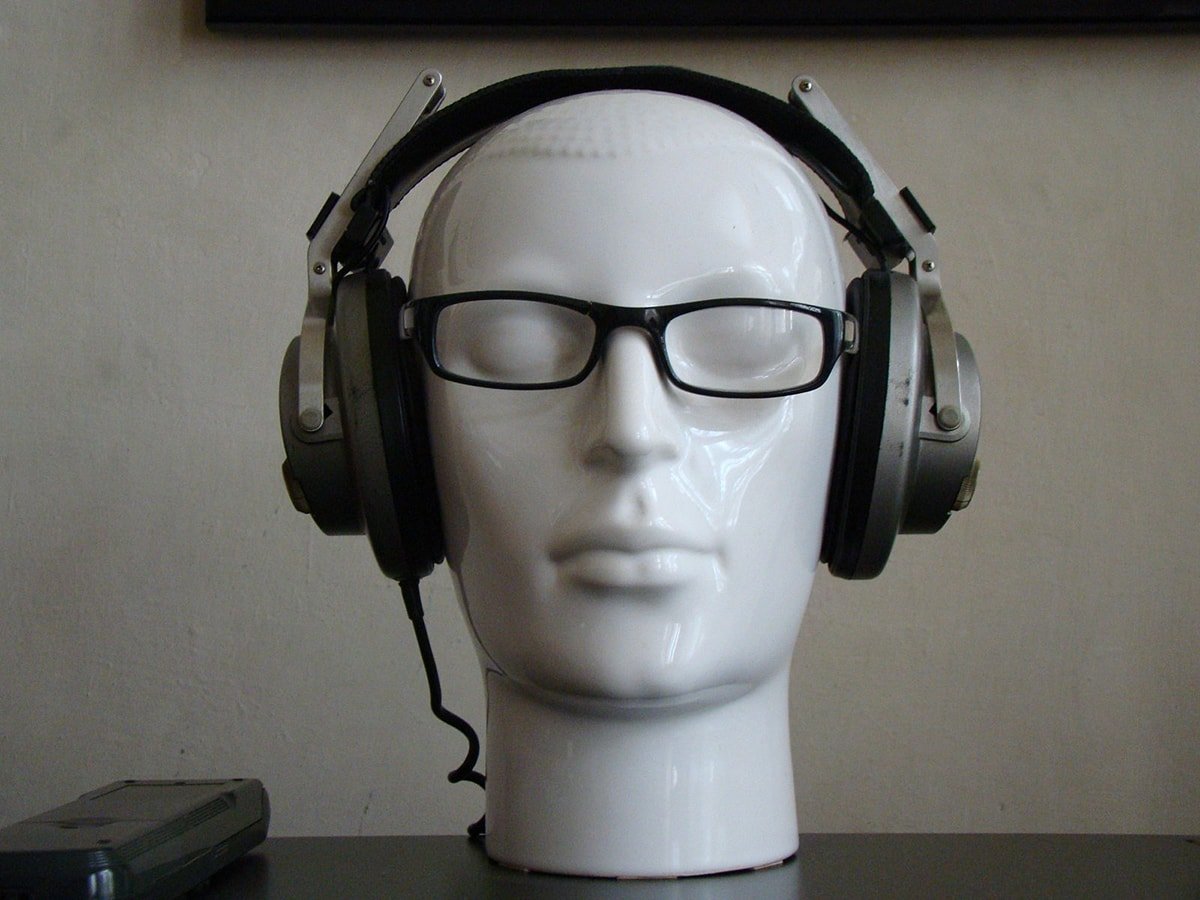
Scotch-taped a wad of cotton on the part of the headphone that was compressing the helix of the left pinna and the pain was mitigated. Thanks for this blog- it’s very helpful.
Hey headphonesty,
Too much informative article mate you should write daily basis .thanks
I put a hair tie (basically a fancy rubber band) around the over the ear headphone to basically carve out space for my glasses without permanently cutting the padding. Works great
Nicole, this is an excellent idea, thank you for sharing.
Great idea!
I work software support and use over-ear headphones on calls that sometimes will span several hours. I’ve been battling temple headaches every day.
I’ll put this trick through it’s paces! Thank you!
Nicole, do you have a picture of how that works?
Nicole, Thank you SO much for this idea. My Headphones have been killing my ears when I wear my glasses.
The problem of wearing earphones and glasses for a long time can cause ear pain or headache. At present, there is a newest glasses design, through the deformation of the temples, the temples are lifted up to avoid the earmuffs. This new way of wearing will solve this problem very well. Provides the most comfortable way to wear earmuff headphones lovers.
Use wire hangers.
Bend the wire hanger to slightly wider than the width of your head and secure it to your headphones with a thin wire.
If it’s loose, make the wire hanger narrower.
If it hurts, spread the wire hanger out more.
I’ve ended up just angling my glasses so that their ‘arms’ rest on top of the headphone ear-covers. Took a bit to adjust to the different angle, mostly because my glasses have fairly “strong” vision-correction, but afterward this has been a very comfortable compromise. This may not work if your glasses have thick ‘arms’ around the ears, but I figured I should share what worked for me.
Angling my glasses to rest over the ear cups of my over-head headphones caused me pain on my nose bridge, So, I wouldn’t recommend it but you can try and see if you can live with it.
“Pressure is inversely proportional to the surface area.”
Therefore the statement about thin-framed glasses is incorrect. I have both thin and thick-framed glasses at hand. A Superdry Chief-54, and a generic wire stemmed frame. I tried both, and I still felt discomfort with both.
Unfortunately, the only over-ear headphones I have is the iFrogz Throwbax (a Panasonic RP-HTX7-C1 copy) with thin pads.
With the generic one, I felt the discomfort sooner. The area of discomfort is above the root towards behind the helix.
With the thick and wide one, it takes more time to feel discomfort and is at the temple tips. And also some slight dizziness because of the old prescription lens, which doesn’t count.
Take this with a grain of salt. I read this article because I haven’t had an over-ear headphone in a while, and I’m thinking of getting a decent one with aftermarket pad offerings.